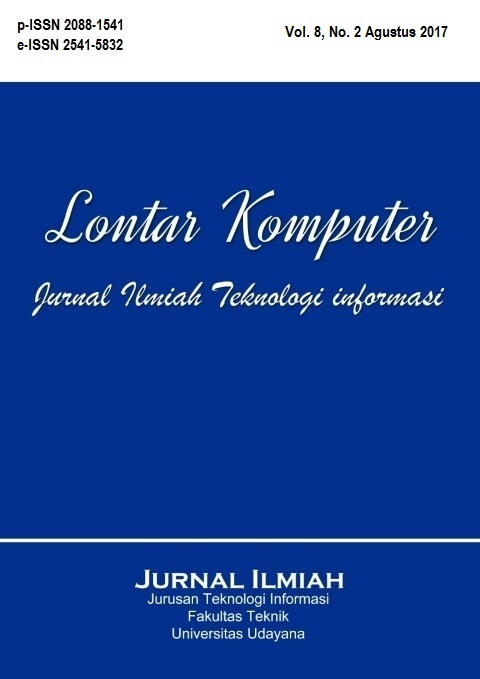Implementasi Database Auditing dengan Memanfaatkan Sinkronisasi DBMS
Abstract
Database auditing can be an important component in database security and governance regulations. Database Administrator needs to be more alert in the methods used to maintain the corporate data, and standards and requirements available against available data. At high level, databases auditing are facility to search the usage of database authority and resources. When auditing is active, every database operation that audited generates an audit trails of the information changes made. Database synchronization is a form of replication, which is a process to convincing every copy of database comprise the same data. Database synchronization allows to utilized many purposes, one of which builds auditing that records every activities occur at database. The audit trails from the resulting of data operations allows DBAs (Database Administrators) maintained audit trails time to time, to perform an analysis of access patterns and modifications to data in DBMS (Database Management System).
Downloads
References
[2] S. A, M. Sukarsa, and W. B, “Pembentukan Data Mart Menggunakan Metode Generalization,” Lontar Komputer: Jurnal Ilmiah Teknologi Informasi, vol. 7, no. 3, 2016.
[3] N. Waraporn, “Database Auditing Design on Historical Data,” Proc. Second Int. Symp. Netw. Netw. Secur., 2010.
[4] W. Lu and G. Miklau, “Auditing a Database Under Retention Restrictions,” IEEE Int. Conf. Data Eng., 2009.
[5] C. Mullins, “Database Auditing Capabilities for Compliance and Security,” The Data Administration Newsletter, 2008. [Online]. Available: http://tdan.com/database-auditing-capabilities-for-compliance-and-security/8135.
[6] R. Gudakesa, M. Sukarsa, and A. Sasmita, “Two-Ways Database Synchronization In Homogeneous DBMS Using Audit Log Approach,” J. Theor. Appl. Inf. Technol., vol. 65, no. 3, 2014.
[7] L. Yang, “Teaching Database Security and Auditing,” Proc. 40th ACM Tech. Sympo-sium Comput. Sci. Educ., 2009.
[8] M. C. Muray, “Database Security: What Students Need to Know,” Journal Inf. Technol. Educ. Innov. Pract., 2010.
[9] H. Surya, “Rancang Bangun Aplikasi Sinkronisasi Database Dua Arah Pada DBMS Homogen Dengan Pendekatan Binary Log,” Universitas Udayana, 2014.
[10] M. C. Mazilu, “Database Replication,” Database Sist. J., vol. 1, no. 2, 2010.
The Authors submitting a manuscript do so on the understanding that if accepted for publication, the copyright of the article shall be assigned to Jurnal Lontar Komputer as the publisher of the journal. Copyright encompasses exclusive rights to reproduce and deliver the article in all forms and media, as well as translations. The reproduction of any part of this journal (printed or online) will be allowed only with written permission from Jurnal Lontar Komputer. The Editorial Board of Jurnal Lontar Komputer makes every effort to ensure that no wrong or misleading data, opinions, or statements be published in the journal.
 This work is licensed under a Creative Commons Attribution 4.0 International License.
This work is licensed under a Creative Commons Attribution 4.0 International License.























